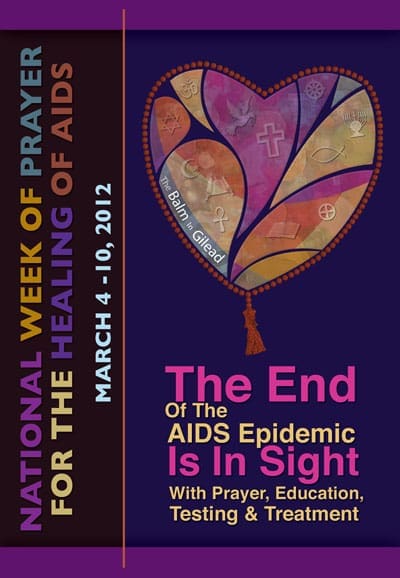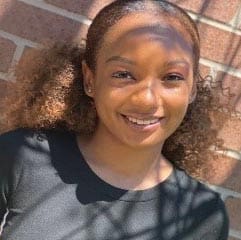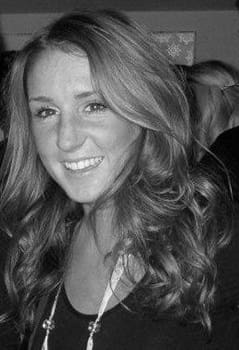
The pastors took their seats at the table next to HIV-positive advocates last Monday as light streamed in through the multicolored stained glass windows at the Trinity United Church of Christ.
It was time to talk about God and AIDS.
The panel discussion at the South Side church, facilitated by The Balm in Gilead and sponsored by the AIDS Foundation of Chicago (AFC), was a precursor to the National Week of Prayer for the Healing of AIDS, March 4-10. Similar panels will take place in Washington and Atlanta. The idea is to bring together leaders of faith traditions and people with HIV to have a frank discussion on how churches can do more to stop AIDS in the African-American community, where the disease has made deadly gains in recent years.
“We don’t want to make the same mistakes of the last 30 years,” said Pernessa Seele, founder/CEO of The Balm in Gilead. “We have to talk to each other, face to face, and ask ‘how do we want to work together to end this epidemic?’ ”
The role of faith leaders is especially critical in fighting the stigma that continues to affect those living with HIV, Seele said in her introductory remarks.
“Faith leaders and people with HIV must come together … Science cannot do it alone,” she said, her voice strong and lilting.
The discussion, moderated by Marsha Martin, director of the Urban Coalition of HIV/AIDS Prevention Services, centered on questions about lessons learned from the last 30 years of the AIDS epidemic and how to move forward.
“What hinders us from responding to HIV/AIDS in the United States today?” Martin asked.
Part of the problem is lack of education, said Louis Spraggins, regional care coordinator for the South Side Help Center.
“There’s a fear of even knowing,” said Spraggins, who is HIV-positive. “Many folks don’t want to know because they don’t know how far we’ve come in medicine.”
And there’s also the same old persistent stigma that remains particularly strong in the African-American community.
“There’s that fear of being seen as gay or bisexual,” Spraggins said, “the fear of being judged.”
African-American churches carry a certain amount of influence in their communities, said the Rev. Stephen Thurston, president of the National Baptist Convention of America. The clergy has a “voice with the potential to cry out in the wilderness.” They need to use that voice to dispel myths and educate people on HIV prevention, he said.
“We who speak from the pulpit must embrace the responsibility to spread that knowledge,” Thurston said.
Joanne Montes is an HIV-positive woman who works as patient advocate at the Ruth Rothstein CORE Center and who serves as a lay minister at her church. One of the major obstacles remaining is the lack of effect cooperation between agencies, the “silo” effect, Montes said.
“How are we going to get all the systems talking to each other?” she said.
Martin pointed to the panel’s varied Christian denominations and varied personal backgrounds as proof that such conversation can occur.
“We know we can sit and talk together and be a model for our communities,” she said.
The next question: What has been learned?
The African-American community may want to take its cues for response to AIDS from another community that’s been highly affected, said Keith Green, AFC’s director of federal affairs and co-chair of the Chicago Black Gay Men’s Caucus.
“One of the greatest lessons learned can found in the gay white male response to the epidemic,” said Green, who is also HIV-positive. “They have lobbied, raised hell … and they take the drugs. On time. Every time.”
As has been proven in recent years, treatment is prevention, Green said. Taking antiretroviral drugs lowers a person’s viral load and reduces the risk of transmission.Green pointed to 2008 Chicago statistics that showed HIV was prevalent in about 2 percent of white gay/bi men ages 18-24, as opposed to a prevalence rate of nearly 25 percent among African-American gay/bi men of the same age.
For the final discussion of the panel, Martin asked panel members to give a Twitter answer (140 characters or less) to the question: How do we move forward?
The Rev. Mark Hanson, the presiding bishop of the Evangelical Lutheran Church (and the only white pastor on the panel), perhaps went over the limit with his response. But the words carried weight, echoing a point he made earlier: HIV infects the whole church. It’s not just the burden for those congregants actually diagnosed as HIV-positive.
“It’s a matter of justice. It’s a matter of mercy. There’s a place for you here. We can rebuke the disease,” Hanson said. “The people are not HIV-positive. The church is.”
Thurston, his Baptist counterpart, kept it brief: “The end of AIDS is inside us.”
***
To learn more about the National Week of Prayer for the Healing of AIDS, go to its website http://www.nationalweekofprayerforthehealingofaids.org/ or visit the Facebook page.


